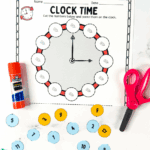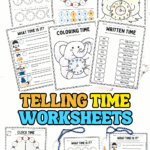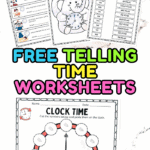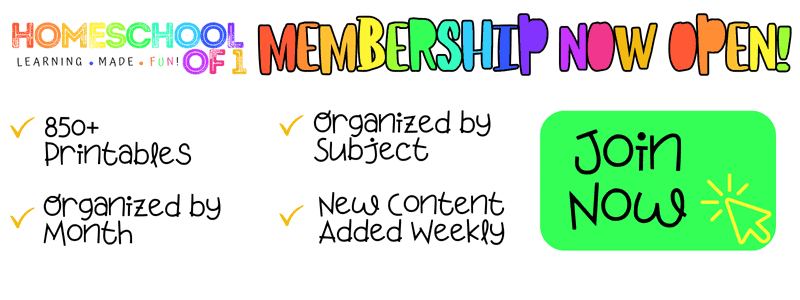Free Telling Time Worksheets
Telling time worksheets were a game-changer in our homeschool when I was teaching my son how to read an analog clock.
Explaining hour and minute hands sounds easy, until you’re halfway through a lesson and your six-year-old is asking if it’s snack time yet.
We needed something hands-on and visual that didn’t feel overwhelming, and that’s exactly what this printable set gave us.
If you’re looking for simple, engaging clock practice, this 7-page free pack might be just what you need.
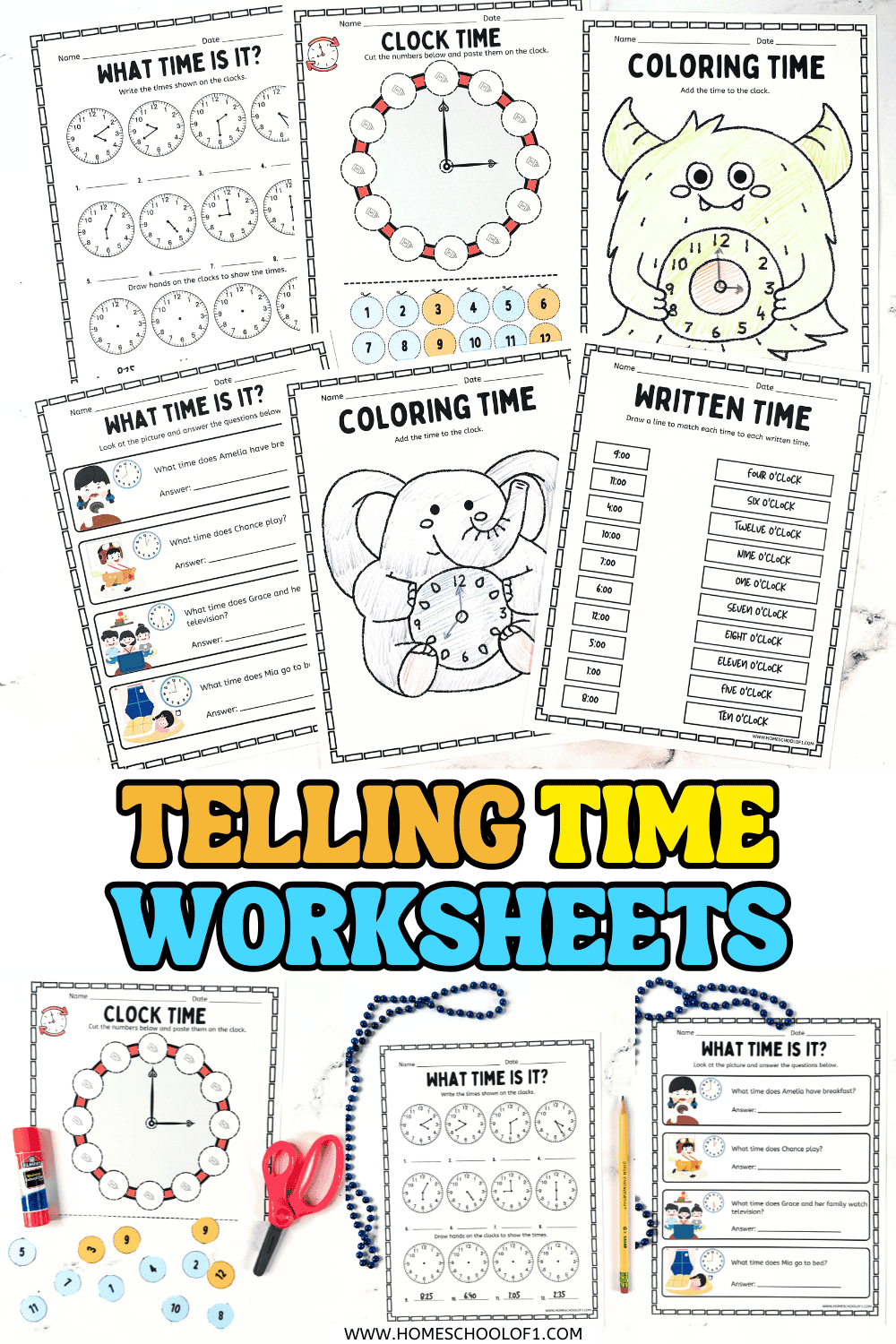
**This post may contain affiliate links. As an Amazon Associate and a participant in other affiliate programs, I earn a commission on qualifying purchases.**
What’s Included in the Free Printable Pack?
These free worksheets are all about practice with purpose. Here’s a breakdown of what’s inside:
Write the Time
Kids look at analog clocks and write the digital time. Great for beginners who are learning to translate what they see into numbers.
Draw the Clock Hands
Given a digital time, kids draw in the hour and minute hands. This is the part that really clicked for us, it gave my son the confidence to draw clocks on his own.
Cut & Paste Clock
Your child cuts out numbers 1–12 and sticks them onto a blank clock face. We used this as a craft activity and even laminated it afterward to use again and again.
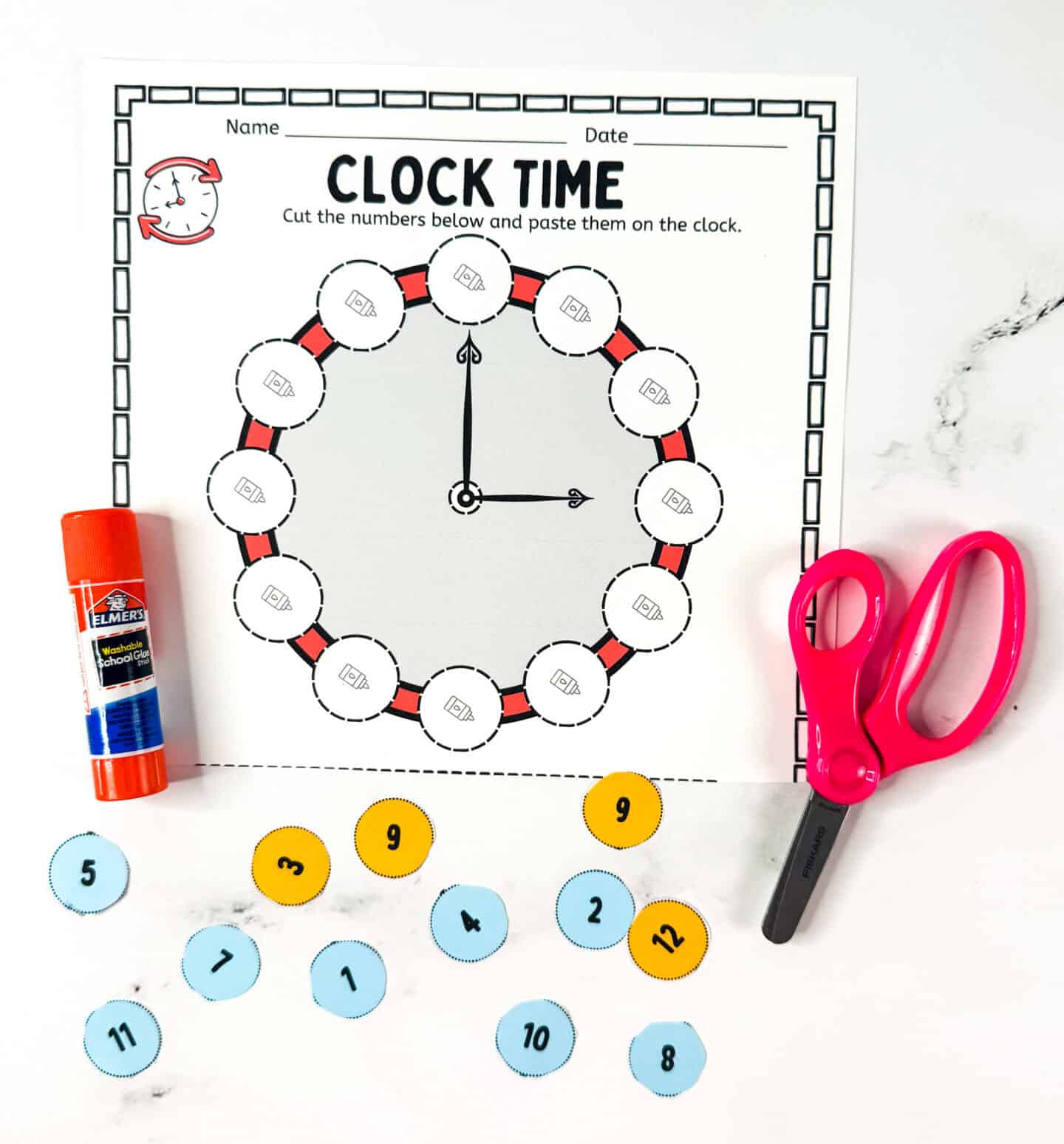
Match Time to Words
A matching activity where kids connect digital times to their written equivalents like “Nine o’clock” or “Four o’clock.” It’s perfect for reading and comprehension practice too.
Daily Routine Time
Kids look at simple pictures, like a child brushing their teeth or eating breakfast, and write what time it is. This helped my son understand how we use time in real life.
Time to Color
There are two pages where kids can color and write the time. We used these as quiet time activities after our lessons. It keeps things fun and reinforces what they’ve learned.
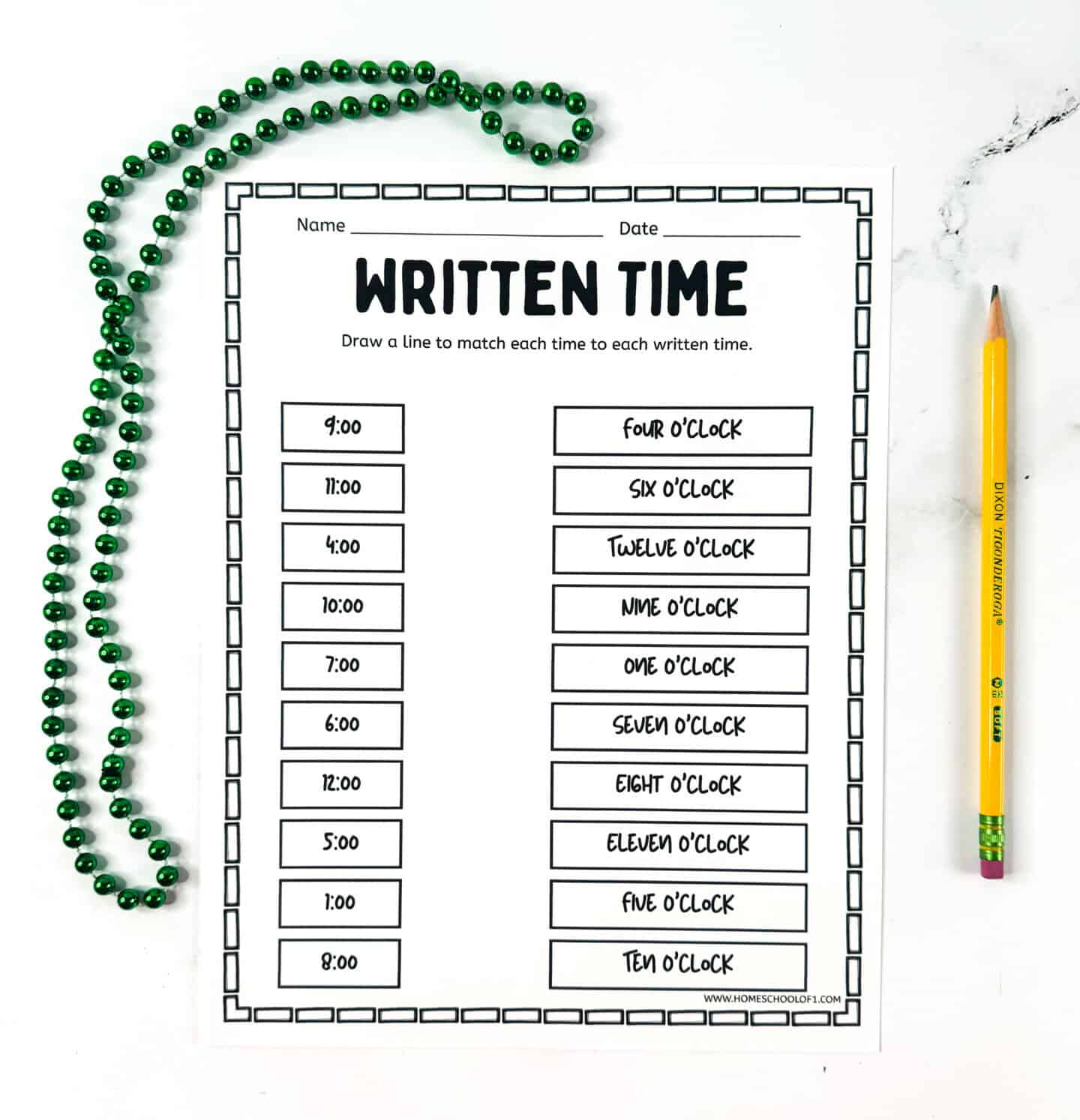
Why These Worksheets Worked for Us
When I first introduced the clock, my son was overwhelmed by the moving parts, literally. These worksheets broke it down into small steps and gave him repeated, low-pressure practice.
Here’s what I noticed:
- He picked up time vocabulary like “quarter past” and “half past” faster.
- Drawing the hands helped him internalize how the minute and hour hands work together.
- He loved the routine page because it helped him make sense of his own daily schedule.
- The coloring made it feel less like work and more like fun.
We’d pull out one or two pages a day and work through them together. No stress, no rush, just small, consistent progress.
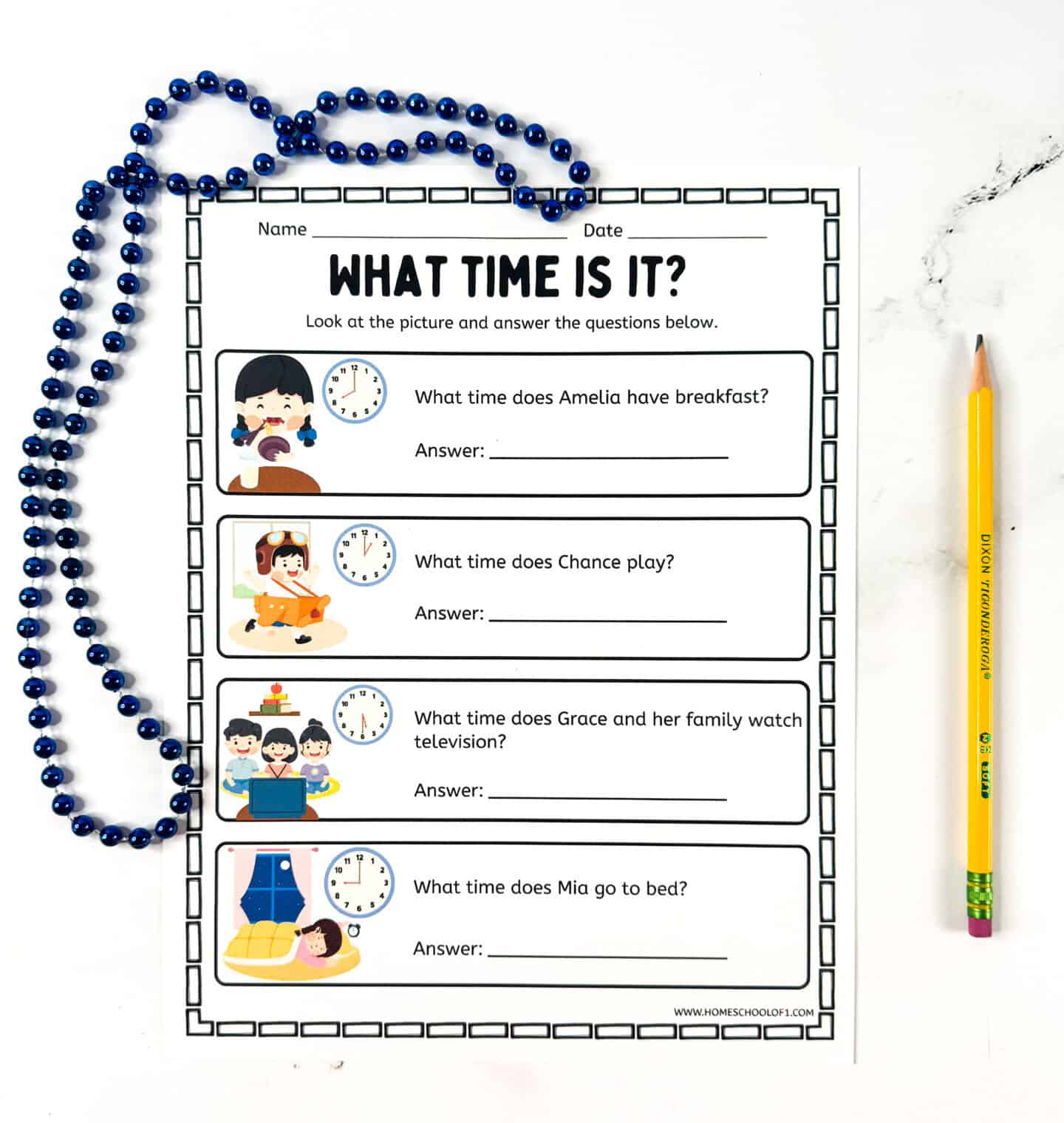
Tips for Using the Worksheets
- Laminate the blank clocks: Use dry-erase markers for endless practice.
- Keep a real analog clock nearby: We kept one on the table for reference. It helped to compare the worksheet clocks to the real one.
- Make it part of your daily schedule: Ask your child, “What time is it now?” or “Can you draw 3:30?” throughout the day.
- Use the routine worksheet as a planning tool: We talked through our own daily activities and wrote down when they happen.
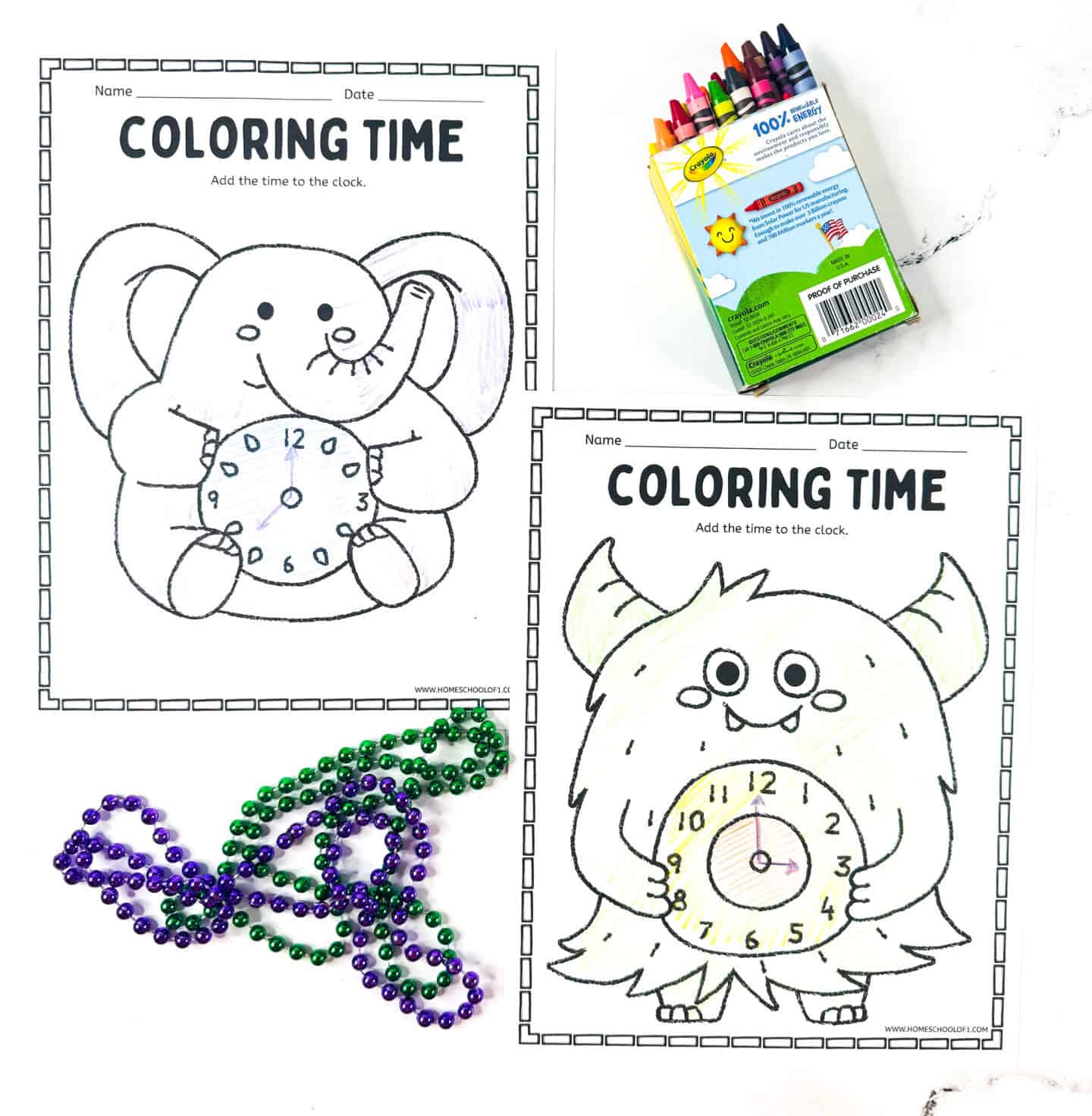
Who These Are For
These telling the time worksheets are best for:
- Ages 5–8
- Homeschool families and classrooms
- Parents looking for extra practice after school
- Visual and hands-on learners
- Kids just starting to learn how to read analog clocks
Whether you’re just introducing clocks or need extra support after the concept has been introduced, this printable pack meets kids right where they are.
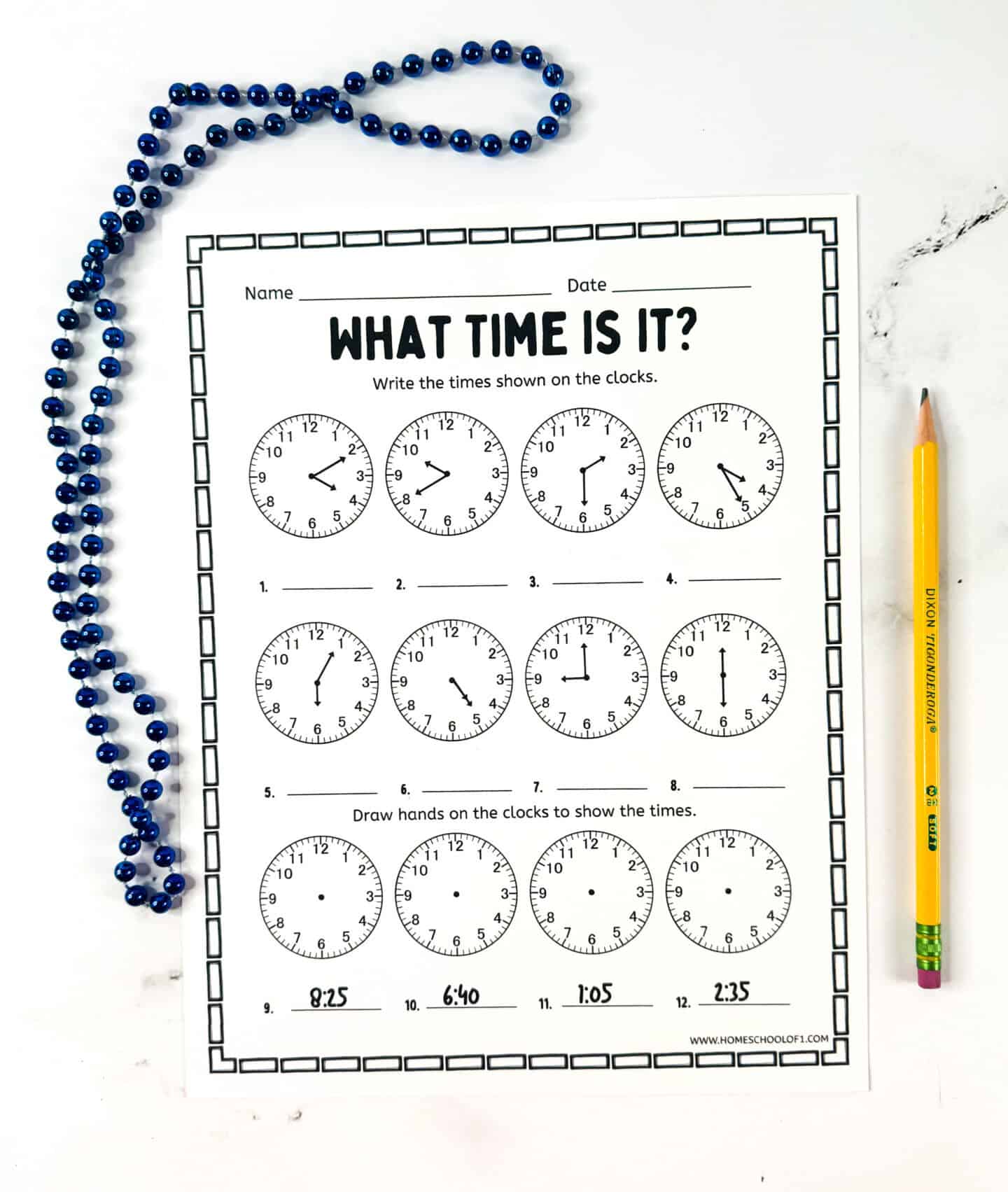
Our Favorite Telling Time Toys
If your child learns best with hands-on tools (like mine does!), these telling time toys are the perfect companion to the worksheets. We’ve used a few of these in our homeschool, and they’ve made all the difference in helping the concept click.
Melissa & Doug Turn & Tell Wooden Clock – A sturdy, colorful wooden clock with movable hands and time cards. It’s ideal for visual learners and built to last. My son loved turning the hands and matching them to the time flashcards.
Learning Resources Time Activity Set – This set includes multiple mini-clocks, activity cards, and a write-and-wipe clock. It’s great for one-on-one or small group practice, especially if you have more than one child learning to tell time.
Jumbo Judy Clock – Big, bold, and easy to read. The minute and hour hands move accurately together, which helps kids understand how both hands relate. It’s classroom-quality and perfect for home too.
We love combining these worksheets with learning toys, and if you’re looking for more, check out our favorite hands-on educational toys.
Tip: These pair perfectly with our early math worksheets if you’re working on number sense or addition at the same time.
Get Your Free Clock Worksheets Here!
If you don’t see the form below, click here to get the free sheets.
Last Updated on 23 October 2025 by Clare Brown

